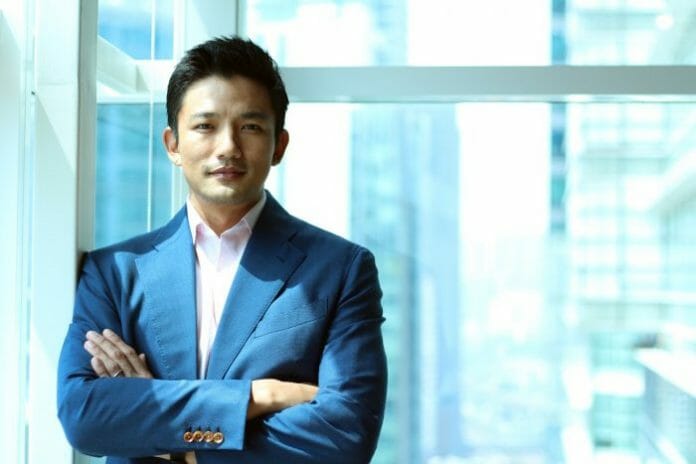The importance of listening and understanding the challenges faced by Google employees and responding to them immediately is the major learning over the past year, says Marc Woo, Managing Director of Google Malaysia in an interview with Business Today.
The interview focused on how the tech giant is implementing the work from home (WFH) arrangement of Googlers, as Google employees are fondly called internally, during the pandemic.
Since early 2020, Google Malaysia employees have all been working remotely and have since been navigating the challenges of this new normal, the Google way.
Marc explains how the tech company in Malaysia responds to their employees’ challenges by sharing an example of when school closures happened in Malaysia and across different countries. Google responded immediately to the many employees who shared their experiences and concerns.
“We acted quickly and offered six weeks of paid Carer’s leave. When schools continued to remain closed, we extended our Carer’s Leave up to 14 weeks of paid leave so Googlers can continue taking care of their loved ones. Earlier on, when we started receiving enquiries from Googlers about loaning furniture and equipment from the office to work from home, we wanted to make sure they had the right equipment to stay productive and provided a WFH allowance to expense necessary equipment and office furniture especially when we weren’t sure how long this uncertainty would last.
Envisioning A Hybrid Workplace
Over the past year, Google reimagined a hybrid workplace for the future, and rethinking ways of making their workplace the most effective, creative, and enjoyable place to work whether remotely or at the office.
“What makes us Google isn’t just the office space, but the people, the culture of openness and collaboration that we’ve built since day one. Despite working remotely and under uncertain circumstances, Googlers still find ways to collaborate, communicate, and build communities with one another,” he says.
For instance, he explains, in Malaysia, Google keeps a healthy balance of regularly communicating through weekly All-Hands so all employees can stay connected and be in the know as a company.
“We have also used this time to invite medical experts to share updates on the pandemic as well. We’ve had virtual classes for meditation, yoga, high-intensity interval training, informal coffee sessions, and even a virtual escape room. We all showed up with potato filters and played a game of “Guess the Potato.” We also organised an office-wide virtual Amazing Race at the end of last year which lasted for four days, culminating in an Awards ceremony.
He adds that as the way work evolves, Google remains laser-focused on putting their Googler community first that prioritizes their productivity, connectedness and wellbeing. He stresses that Google is guided by data in everything that they do, and will continuously test and learn from new concepts that help shape Google’s future workplace.
Plans For A Hybrid Work Solution
Taking into account what the future of work will look like at Google, Marc says that Google is closely looking at productivity, and specifically how their employees have adapted to the work-from-home experience over the last year.
“When we look at something as complex as productivity, we have to look at it holistically. We use multiple sources of data, including surveys, usage data from our internal tools, interviews, and experimental pilots to make sure we’re getting the whole picture.
The first way that Google plans to implement their hybrid work solution according to Marc, is by fostering the right environment for agility and innovation even while working remotely is crucial to create more flexibility and when they do intend to have employees back at the office, they need to do this in a way that’s thoughtful and responsive in going about it in a measured way.
Quoting Google CEO, Sundar Pitchai, who said, “a sense of community in-person is very important as we value our culture and our workplace”, Marc adds that the tech giant in Malaysia is expected to move towards a more flexible model that will vary based on the nature of work, focused on relieving obstacles to well-being such as five-day-a-week commutes.
Second, Marc says that supporting Googlers’ mental wellbeing during these uncertain times is key to getting the best from their workforce.
“Google has long placed as much emphasis on our employees’ mental health as their physical health. Preserving our employees’ well-being is a priority because our people are our greatest asset, and we know everyone’s experience is unique.
“With the pandemic, we started looking at ways to update our policies and introduce new practices to better support Googlers during this uncertain time.
They have their global reset days, introduced by Google CEO Sundar Pitchai, which are global rest days, so employees have days off to prioritize their well-being, with the next two days happening in October and December.
Another is their “No meeting week”, where teams are encouraged to have “no meeting week”, essentially a week where there are no meetings scheduled, so Googlers can focus on independent work.
Also, they have made their Blue Dot, which is their internal mental health awareness group, now available virtually. Googlers can select an appointment time with a Listener from any region that works for them, and it lowers the barrier for anyone who was previously hesitant to reach out.
“There are so many different experiences – we don’t know what the future holds so all we can do is continue our focus on pulsing employees and using these insights to inform new programs and processes,” Marc concludes.









